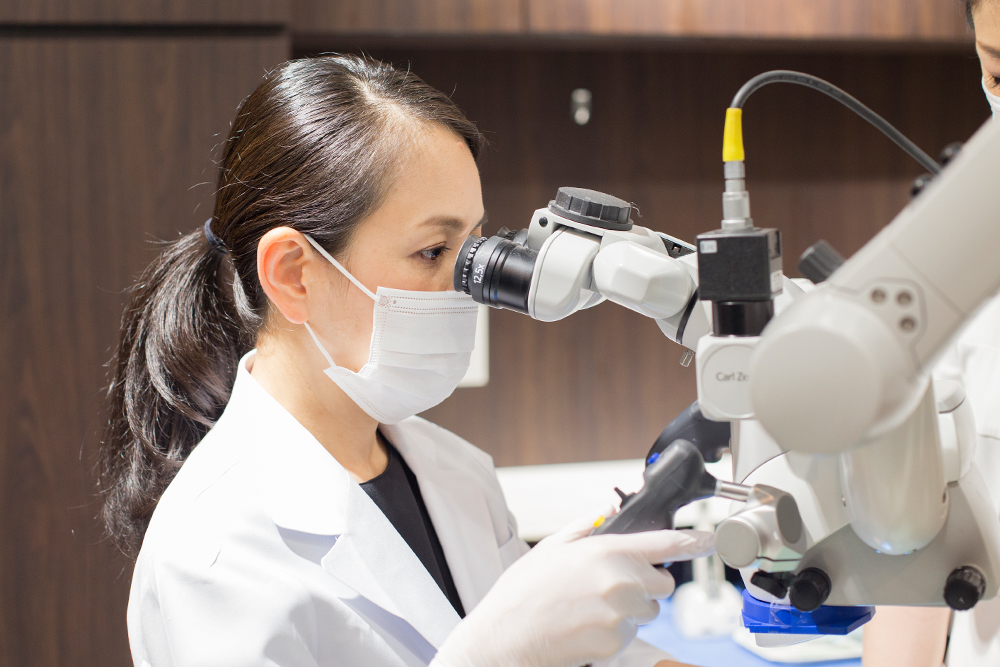
Features of our root canal treatment
A root canal is a canal in the root of a tooth that contains nerves and blood vessels called the pulp of the tooth. Root canal treatment is needed when inflammation occurs in the root canal due to tooth decay or injury or bacterial infection occurs in the affected part if you remove nerve in the past.
If you need a root canal, you will be treated by our doctor who specializes in this field.
Classification of root canal treatment
Pulpectomy
Pulpectomy is a treatment to remove the nerves and blood vessels from a tooth. It is done when a nerve or blood vessel has been damaged by inflammation or other factors to the point that it cannot be preserved.
Infected root canal treatment
This treatment is performed when bacteria have re-entered a tooth that has had a root canal treatment. A root canal treatment for a tooth whose nerve have died due to severe tooth decay or injury is also called an infected root canal treatment.
Key points for root canal treatment
The key to root canal treatment is to disinfect the bacteria in the root canal as much as possible and prevent the invasion of new bacteria. A variety of modern instruments are used during the treatment.
Moisture proof rubber dam
A rubberized dental mask called a “rubber dam” is placed on the tooth for treatment. In this state, the root canal is cleaned and sealed to prevent bacteria from entering the root canal again.
Stereo microscope
In recent years, microscopic magnification of the affected area has made it possible to find root canals that are not visible to the naked eye. It increases the accuracy of removing the source of infection and shortens the treatment time. It is also thought that the success rate of treatment is higher than with the naked eye alone.
The success rate of root canal treatment

Some root canals have complex structures with branches and curves. This is why it is extremely difficult to completely clean out the inside of a root canal.
Even if you think you have treated them well, there is a risk of recurrence because the lesions that are too small to be confirmed are left behind.
Therefore, we use microscopes (microscope-like magnification devices) in addition to the naked eye to minimize the amount of residue left behind as close to zero as possible.
However, it is said that the more advanced the stage of the disease, the higher the risk of recurrence. It is important to keep in mind the importance of early detection and treatment by having regular checkups as much as possible, even after treatment.
Other service lists
Recommended treatments
Comprehensive oral examinations
when you are concerned about the recurrence of tooth decay or have been treated long ago.
See detailsCeramic treatment
when you are worried about deterioration of fillings that was treated in the past
See details

